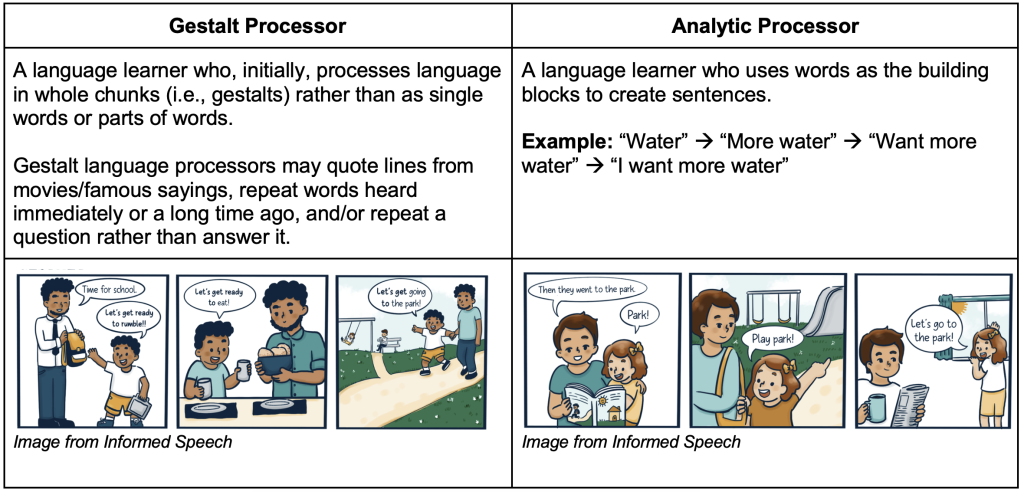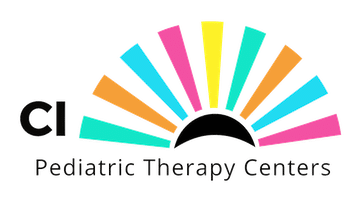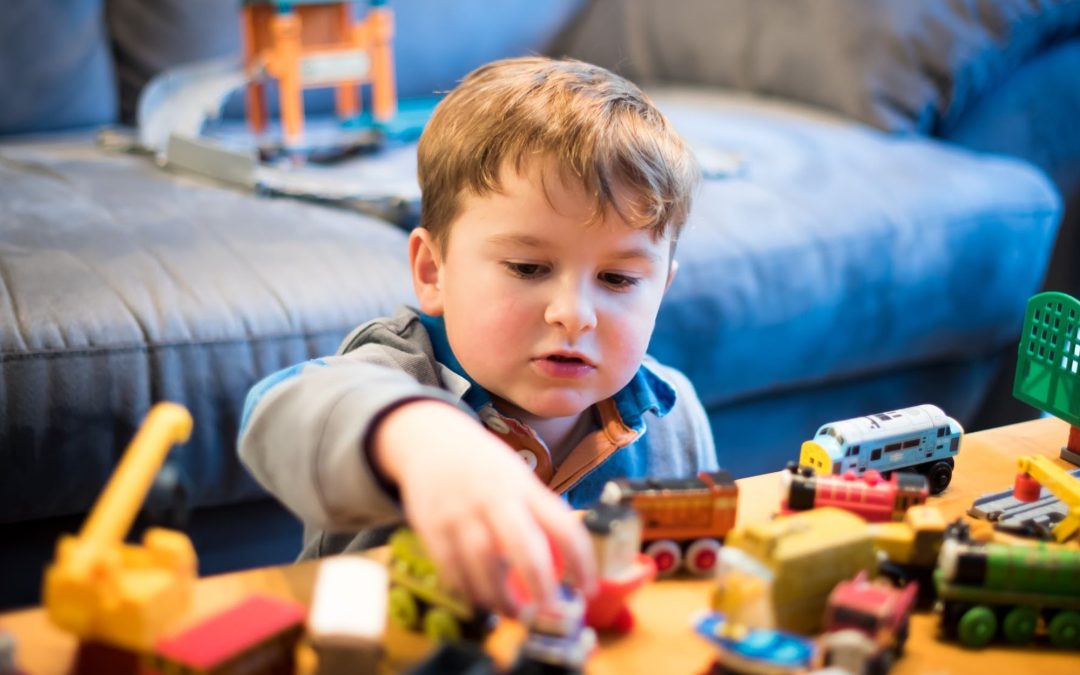“To infinity and beyond!”
“Fish are friends, not food.”
Each of us can recite our favorite show or movie lines. But what about when we hear children recite these lines or repeat exactly what we say frequently? Well, they may be a gestalt language processor! Let’s dig a little more into what this means. There are two types of ways individuals can process language:

What is a gestalt? A piece of language expression (e.g., phrase, sentence) that is internalized as a whole unit, rather than a sum of its parts. In the images above and below, “Let’s get…” is being utilized as a “chunk” of language, as opposed to the child using “let’s” and “get” separately, as an analytic language processor would.
Echolalia: Language that is repeated either directly following its delivery (e.g., immediate echolalia) or after a significant period of time (i.e., delayed echolalia, often referred to asscripting).

How Do I Respond to Gestalts?
Echolalia is communicative and the first step in the individual’s “natural” development of language. Echolalia is not something to be suppressed or ignored- it is meaningful communication; we may just need to do a little detective work to find the hidden meaning!
Scenario: A child is playing with a train set and states, “The storm is coming!” as he crashes the trains to the floor.
- Listen to/acknowledge what the child is saying through the gestalt. In this scenario, the child is letting his communication partner know that something bad is going to happen and foreshadowing the train crash.
- Model other language that could be used – phrases beginning with “Let’s” (“Let’s crash!”), “It’s” (“It’s crashing!”), and “We” (“We can do it!”) will help to facilitate later “mix and matching” of language.
- Continue use of motivating activities for the child- this is where we will hear the most language and gestalts and be able to acknowledge and model, model, model language!
- Limit use of questions, as gestalt language processors often repeat the question or parts of the question.
What’s Next?
There are various stages gestalt language processors need to progress through to get to the point where they process words as single units. A speech-language pathologist can work with your child to expand upon the current gestalts they have and foster development towards self-generated and individualized grammar. We can expect both gestalt language processors and analytic language processors to achieve high levels of communication with the right intervention!
“Our kids will hear whatever parts of these things they are drawn to, but when we build intentional sound gestalts into their lives, we increase the chances they will extract what we hope for once they’re ready: language.” – Marge Blanc.
More Information on Natural Language Acquisition (NLA) and Gestalt Language
- Take the Echolalia Course by Meaningful Speech
- Check out Marge Blanc’s Book: Natural Language Acquisition on the Autism Spectrum
- Follow Meaningful Speech on Instagram
References

